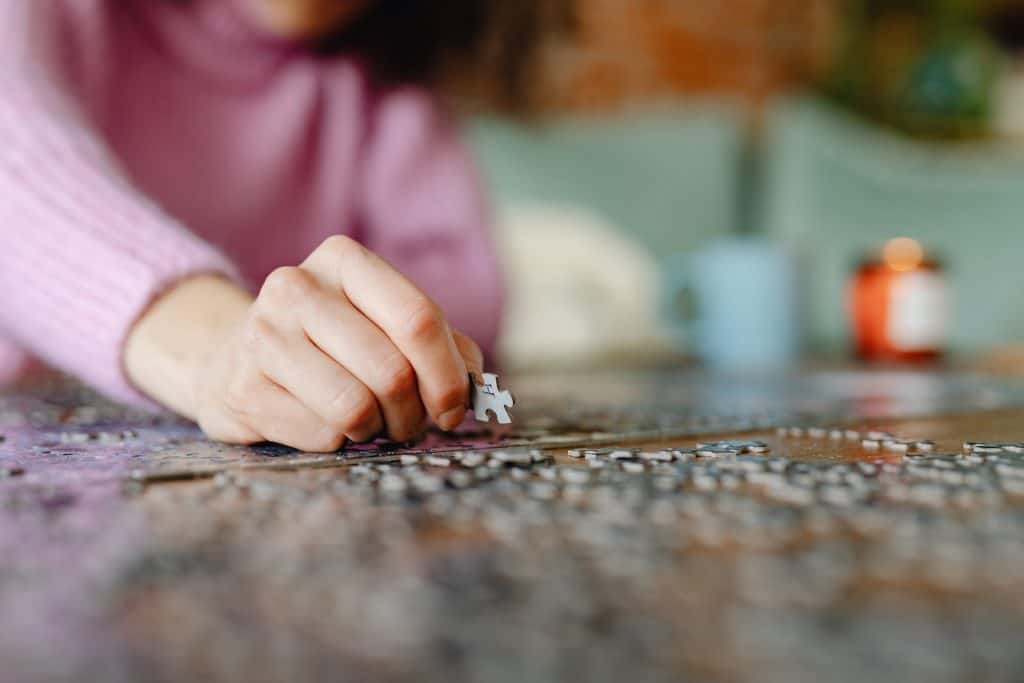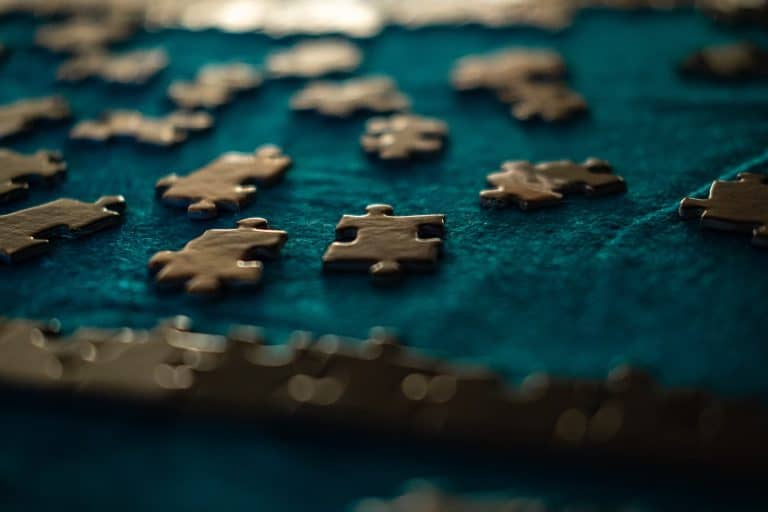Jigsaw puzzles are a fun and challenging activity that can help to sharpen your problem-solving skills. They come in all shapes, sizes, and difficulty levels, so there’s something for everyone.
However, the more difficult jigsaw puzzles can be quite tricky to solve. If you’re having trouble figuring out how to tackle them, don’t worry – with these tips and tricks, you should have no problem conquering even the toughest of jigsaw puzzles! We’ll cover everything from sorting strategies to organizational methods and more. So let’s get started!
Tips and tricks for solving difficult jigsaw puzzles
Here are some of the best tips and tricks for solving difficult jigsaw puzzles:
Start with the edge pieces first to create a frame for the rest of the puzzle

On a flat surface, organize the pieces in categories such as colors, shapes, and sizes. The easiest way to successfully tackle a difficult jigsaw puzzle is to start with the edge pieces first. Arranging border pieces will give you something resembling a frame for the rest of your project. This makes look down at the entire space and take in the bigger picture; it also shows you clearly where all the corners should go.
Once you have your frame, begin strategizing and sorting out large chunks of the puzzle before working on small details. It’s like putting together a huge jigsaw, but with more precision! Being conscious about which pieces come next will keep you organized and reduce frustration as well as time spent completing each piece. Beginning from the outside in is an easy-to-follow strategy that will guide you through anyone’s problem-solving puzzle!
Work in small sections, so you don’t get overwhelmed by the size of the puzzle
Working through a large, complex jigsaw puzzle can be an intimidating task. To break down the work and make it more manageable, start by picking a corner piece or edge piece and focus on building out from there. This will help you to visualize the overall goal of the puzzle without feeling overwhelmed by the bigger picture. Whenever possible, work in blocks or small sections of two to four pieces; this will give you tangible elements to focus on as well as help prevent frustration from a too-difficult task. By starting small and working in sections your confidence will gradually build until you’re successfully assembling the entire jigsaw puzzle!
Use a reference image to help you identify where pieces go

Solving a difficult jigsaw puzzle can be an incredibly daunting task, but don’t give up hope! One of the best techniques for putting it all together is to use a reference image to help identify where pieces go. Keep a screenshot or photo of the finished puzzle close by and as you work, look for any similarities between the reference image and your own progress – which pieces fit together? How many similar shapes or colors are there around them? Once you’ve identified some potential matches, take the time to carefully match them against each other. By taking a ‘big picture’ approach, you ensure that all pieces will eventually fit together for the perfect final result.
Sort puzzle pieces into groups based on color or pattern to make it easier to find matches

If you’re stuck on a difficult jigsaw puzzle and don’t know where to start, sorting pieces into groups based on color or pattern is a good way to get organized. This allows you to focus on finding the pieces that fit together easily and then build off them. It also helps to group pieces by internal features like straight edges or corner squares.
Center pieces are typically the easiest place to start since they are usually the most distinct. Once you have a good idea of what pieces belong together, begin by looking for matching edges and corners. This will help you quickly identify where pieces fit into each other and make it easier to find potential matches. Additionally, it’s useful to create sections of the board and only work on separate sections at a time in order to avoid getting overwhelmed. With this strategy, soon enough you’ll find the entire puzzle is put together!
Don’t force pieces that don’t fit – there’s likely another piece that will work better
When solving a jigsaw puzzle, it can be easy to get frustrated when you come across pieces that just don’t seem to fit in the right spot. Before becoming too discouraged, it’s important to remind yourself that there’s likely another piece that fits better – and you should take the time to find the right one instead of simply forcing the ill-fitting piece into place. While exploring other possibilities may take more effort, it will ensure a more enjoyable experience overall and provide greater satisfaction when finally completing your masterpiece.
Take a break if you get frustrated – sometimes coming back with fresh eyes can help

When attempting to solve a difficult jigsaw puzzle, know that taking a break is okay and often necessary. Mental fatigue can set in quickly when staring at the same pieces for an extended period of time. Sometimes stepping away from the task and coming back with fresh eyes after a break can help you make game-changing progress on your puzzle. Take some time to step away and clear your mind – in addition to giving yourself a well-deserved break, you may receive some much-needed inspiration and new ideas when returning to the challenge. Giving yourself breathing room from complex puzzles can spark creative thinking and lead to innovative solutions – why not give it a try?
To solve jigsaw puzzles, with patience and practice, you can successfully put the pieces together for a perfect final result. With helpful techniques like using reference images and sorting pieces into groups based on color or pattern, as well as taking breaks when needed, you’ll soon find yourself tackling challenges of all sizes.
Take Away: Tips and tricks for solving difficult jigsaw puzzles
In solving jigsaw puzzles, patience and practice are key. Additionally, using reference images, sorting pieces into groups based on color or pattern, and taking breaks when needed can help you reach success. With this information, you’ll soon find yourself tackling challenges of all sizes!
Good luck!
For more articles:

